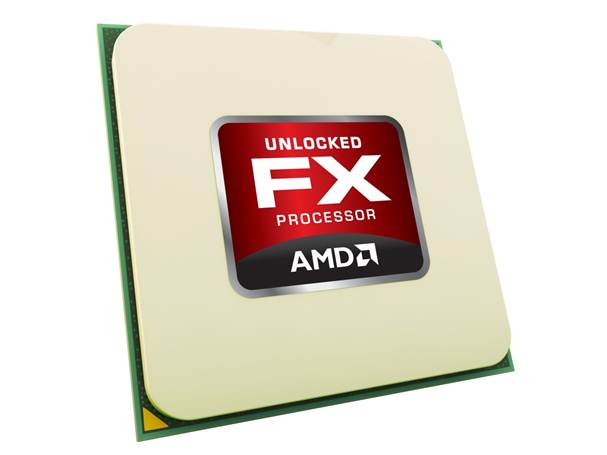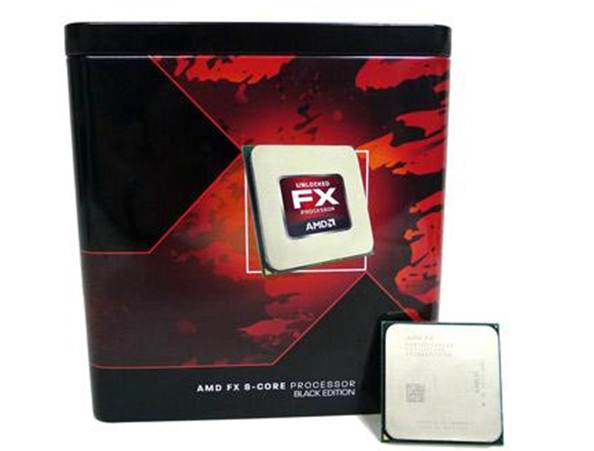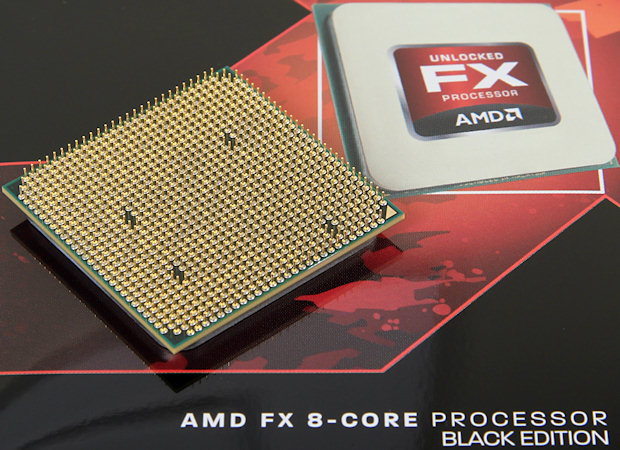AMD fell behind with its first generation of
FX processors. Can its second generation of FX chips challenge Intel’s
mid-range?
AMD has a superb range of graphics cards
and a strong range of APUs, but one of its stalwarts - its line of traditional processors
– is floundering. Last year’s first generation of FX chips aimed at Intel’s
Core i5 range and fell short, so AMD is back with a second attempt.
Minor Improvements
AMD hasn’t set out to reinvent the wheel
with its latest range of processors, so architectural changes are minor. The
new chips, codenamed Vishera, are still built on a 32nm manufacturing process,
the same one used for last year’s Zambezi chips, and a technological step
behind the 22nm process Intel uses for its Ivy Bridge-based parts.

AMD
FX
The architecture underneath has a different
codename: Piledriver. It’s an ambitious-sounding name and it’s the successor to
the poorly received Bulldozer, but under the hood, AMD hasn’t made any sweeping
changes. Instead, the firm hopes a host of smaller changes will contribute to
performance gains over last year’s silicon.
AMD has improved the Floating Point and
System Call architectures, which make for more efficient interaction with the
rest of the PC, and the L2 cache, which helps increase memory access speed, has
been made more efficient too.
The Branch Prediction module, which sends
tasks around the CPU’s cores, has been made more powerful, and scheduling has
also been given a boost. Missing, though, is the component that made AMD’s
recently released Trinity APUs stand out: a Radeon GPU. There’s no sign of
integrated graphics in these chips, and that sees AMD lagging behind Intel,
which kits out its mid-range Core i5 chips with a variety of admittedly weak
chipsets.
Specifications
·
32nm manufacturing process
·
Four to eight cores
·
3.3GHz-4GHz stock speed
·
3.5GHz-4.1GHz Turbo Core speed
·
2MB-8MB L2 cache
·
4MB-8MB L3 cache
·
Socket AM3+
The New FX Range
The four chips in the new FX range are made
of between two and four modules, and each includes two cores, so the chips have
between four and eight cores in total. Turbo Core is used to dynamically
overclock chips when a little extra grunt is needed, but it won’t be providing
any dramatic performance improvements; the most you’ll eke out of any of the
new FX chips is 600MHz across half of a chip’s cores, with a 300MHz improvement
available across all cores.
Still, every chip in the new range is
unlocked for overclocking, each core has 2MB of devoted L2 cache, and each
processor has 8MB of global L3 cache.

The
four chips in the new FX range are made of between two and four modules, and
each includes two cores, so the chips have between four and eight cores in
total.
Bringing up the rear is the FX-4320, which
has four cores clocked at 4GHz with a Turbo Core limit of 4.2GHz, and next up
the stack is the six-core FX-6300, which zips along at 3.5GHz with a maximum
Turbo Core speed of 3.8GHz.
Two of AMD’s latest chips boast eight
cores. The FX-8300 runs at 3.3GHz with an all-core Turbo peak of 3.5GHz, and
top of the pile is the FX-8350. Its eight cores run at 4GHz, with a half-load
Turbo maximum of 4.2GHz and a full-load peak of 4.1GHz.
Performance
Worth buying for applications that are
genuinely multi-threaded
AMD has spent much of the build-up to these
chips talking about its multi-tasking prowess, but after running our
benchmarks, the results are mixed.
The FX-8350 either matched or beat Intel’s
all-conquering Core i5-2500K and i5-3570K in several of our benchmarks. Its
multi-tasking prowess was highlighted by a score of 1 in the application
switching test, with the Intel chips bringing up the rear with scores of 0.92
and 0.91.
The gap was widened when we ran our video
rendering benchmark, which makes use of multi-threading: the AMD FX-8350
sauntered to a score of 1.18, the i5-2500K scored just 0.86, and the i5-3570K
scored 1.01. And in the 3D rendering test, which uses Cinebench, the AMD FX
chip scored 0.99 - the equal of the Core i5-3570K, and better than the 0.9
scored by last year’s Core i5 of choice.

AMD
may boast that its new FX cores cope well with multiple applications, but in
our multi-tasking test it scored 0.9 - a worse score than the 0.99 of the
i5-2500K and the 1.08 of the i5-3570K.
AMD’s hardware isn’t quite as capable when
it comes to traditional single-threaded applications. Its iTunes encoding
result of 0.83 can’t compete with the 1.14 and 1.21 scores from the old and new
Core i5 processors, and its 0.96 result in Photoshop lags behind by a similar
margin.
The FX-3850 also struggled when running
single-threaded applications concurrently. AMD may boast that its new FX cores
cope well with multiple applications, but in our multi-tasking test it scored
0.9 - a worse score than the 0.99 of the i5-2500K and the 1.08 of the i5-3570K.
Overall, the FX-3850 scored 0.95. It’s a
small improvement over the 0.89 scored by last year’s FX-8150, but Intel still
has the overall lead: its i5-2500K scored 0.96, but the i5-3570K beats all
comers with 1.04.
We’ve only been able to test one other
Vishera-based chip, and the FX-8320 fell in line behind its bigger brother with
a benchmark score of 0.92.
Keeping Their Cool?
With eight cores that use a less efficient
32nm manufacturing process than Intel’s 22nm-based Ivy Bridge chips, there’s
every chance that the second generation of FX chips could get hot under the
collar and consume plenty of power.
Neither of the two chips we tested got
particularly hot: the FX-8350 hit a peak of 63°C during our tests, with the
FX-8320 just 2ºC cooler.
The move from Bulldozer to Piledriver has
only had a minor impact on power consumption. Last year’s top-end FX chip drew
222W from the mains at peak, but the FX-8350 needed 212W from the mains when
stress-tested, with the lesser chip five Watts behind. It’s an improvement,
then, but not enough to catch up to Intel: the i5-3570K sucked just 129W from
the mains when running at 100%.
The Verdict
An improvement over last year’s parts but
not enough to topple the dominant Intel
Like AMD’s recent Trinity update, its
Vishera-based FX chips are a small but welcome improvement over last year’s
silicon: better in our benchmarks, especially in multi-tasking, and more
efficient.
AMD has bettered Intel when it comes to
prices too. The FX-8350 tips the scales at $261, the FX-8320 costs $226, and
the two lesser parts are much cheaper: the FX-6300 is $178, and the FX-4300
costs $163. That compares well with Intel, which currently sells its Core
i5-3570K for $283 and its Core i5-2500K for $265.
Intel, though, is still ahead in the rest
of the crucial categories. Its i5-3570K is still much quicker in more common
single-threaded applications, its chips are cooler and consume less power, and
they come with integrated graphics cores and so don’t need a discrete GPU.
AMD’s new FX chips are worth buying if you regularly work with applications
that are genuinely multi-threaded, but if not, you’re better off spending $23
more and buying the i5-3570K. mm Mike Jennings
|
Details
|
|
Price:
|
FX-4300, $163; FX-6300, $178; FX-8320, $226; FX-8350, $261
|
|
Manufacturer:
|
www.amd.com
|
|
Quality:
|
7
|
|
Value:
|
7
|
|
Overall:
|
7
|